Update December 2013: Please read my blog regarding the fact that TTL-BL is linked to matrix metering performance. Newer bodies are behaving slightly differently to my D90 test results so results will vary depending on the model Nikon you have.
Short version :- " The 'new' TTL/BL selectively meters off the focus point diamond and exposes for the brightest object in that area , taking ambient into account regardless of the background . The subject does not need to be central , it does not need a bright background to work ".
Long version : -
First of all why should you care about how TTL/BL works if you only use TTL flash ?
For one thing your built in speedlight works and meters in TTL/BL mode .
The SB400 defaults to TTL/BL mode . Note : When using forward flash with the SB400 , SB800 and the built in speedlight no compensation should be needed as the distance info is being used .
And as soon as you start using Nikon's wireless flash features in "TTL" mode it is actually using TTL/BL whether you like it or not and that is a good thing as I'll explain later [ basically because it is a superior metering system to TTL ]
The confusing part is the manual that suggests that TTL/BL tries to balance the subject with the background - that's only true for cameras older than the D200 . This means it measures the back-lighting and determines how much flash to add to the subject to make it as bright as the background . The manual's description is so ambiguous that it has even caught out top photographers . In a popular book on flash the author , who uses Nikon flash extensively , makes the incorrect statement "It means the camera is now in balance mode , trying with all its might to make the foreground and background roughly equivalent exposure zones " ... his description of the results shows that he thinks the flash will try to light the background as well as the subject . This statement is totally wrong and what he doesn't realize is that when he is using wireless CLS he is in fact using TTL/BL mode so his advice not to use TTL/BL is contradictory !
The correct term for the newer cameras is "balanced fill flash" which doesn't care about the background , it concentrates on correct exposure of the subject taking ambient "on the subject" into account and compensating accordingly - REGARDLESS OF THE BACKGROUND ! .
I did my tests with a Nikon D40 and 18-105VR lens and a Nikon D90 with a Tamron 17-50 F2.8 . This model lens [Tamron 17-50 ] has been known to give incorrect distance info - my copy gave equal results to the 18-105 lens so it must be good !
My tests were duplicated by Mike who is an ex-pro photographer and software engineer using his D3 and D300 . His two cameras varied quite a bit in TTL flash mode but gave consistent results in TTL/BL+1/3 according to his tests .
First we need to get get some myths out of the way . There are many sites out there stating that
1.) the subject needs to be central , and
2.) you need some ambient for the flash to balance with .
Those statements are as obsolete as a D100 because that is generally the model camera/time-period that it applies to . So those statements are correct for anything older than a D200 but after that they are wrong !
I've done a series of tests where I break down the different 'elements' of TTL/BL flash compared to TTL flash and dismiss these myths that are so widespread .
In summary before you view the results this is my conclusion :
1.) TTL flash only uses the matrix or Centre Weighted pattern , whichever you select , for its metering so the subject needs to be central or you need to use '' flash value " lock when recomposing .
TTL/BL uses the FOCUS POINT DIAMOND as well which makes it superior . I have not seen it overexpose unless all the focus points are on a black subject . Even if one focus point is on a white subject it will make the blacks 'black" as they should be while TTL would try to brighten them .
2.) TTL flash is similar to normal camera metering in that if there is a dark background or a lot of black it overexposes by concentrating on brightening the shadow areas .
TTL/BL concentrates on the lighter areas and tries to preserve highlights mainly with 'pure bounce and no forward flash . This often leads to under-exposure when there is a lot of white in the background and good exposure if there is a lot of black in the background - setting the flash to TTL/BL + 1/3 fixes a lot of this and produces a much more consistent batch of pictures that might only need a slight tweak of the levels to be good compared to TTL which often clips highlights beyond recovery .
3.) When you use Nikon's CLS "creative lighting system" wireless flash the camera/flash defaults to TTL/BL which is another nail in the coffin of the theory that you need ambient for TTL/BL to work [ on newer cameras that is ] .
4.) TTL thinks it is the only light source which is why you need varying degrees of compensation in daylight and cloudy weather .
TTL/BL also takes the camera's metering for the ambient into account and then adds the amount of flash it deems necessary for a correct exposure .
I'll start with these pictures ...


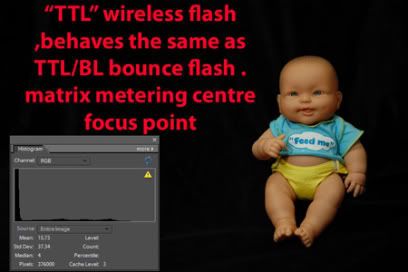
They prove that TTL/BL does not use the centre of the frame , it does not need ambient to balance with [ it was taken at night ] and as long as the subject is under the focus point diamond , not necessarily the active focus point , TTL/BL will do its best to preserve highlights - and it also means that you don't need to use Flash value lock " FV lock " . It also shows that when you use wireless 'TTL' the camera meters the same as TTL/BL !
TTL , on the other hand , is a simple exposure based on the centre of the frame , it does not use the focus points in its calculations and doesn't care how much ambient already exists , so you need to be able to use negative compensation more often when using TTL . TTL/BL does this for you .
An interesting aspect of TTL/BL is that it uses the focus distance from your lens to calculate direct flash exposure , as well as the TTL reading . Try this experiment , take a flash picture with direct flash [ We avoid direct flash when possible but it is useful in bright sunlight ] .
Then manually move the focus distance and watch the flash exposure change !
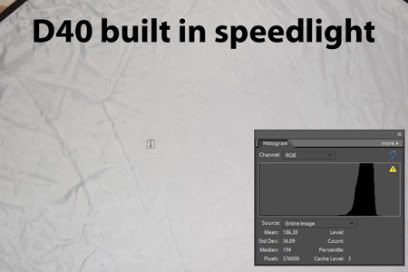
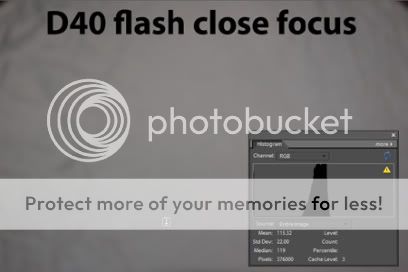
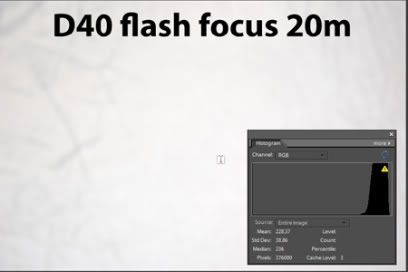
Then try this , take a 'normal ' picture in TTL/BL mode [ or TTl for that matter ]
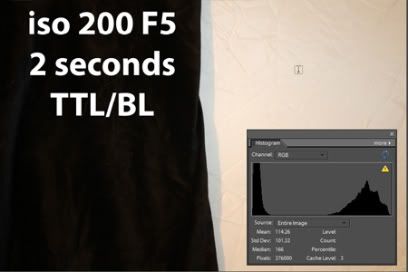
Now try again but block the pre-flashes using second curtain and 2 seconds exposure [ as in the first picture ] then move your hand away before the flash fires .....
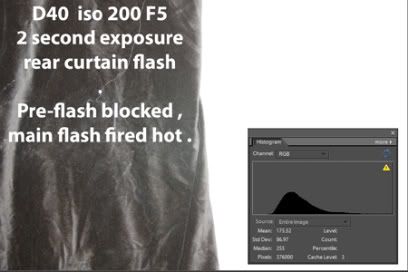
This proves that TTL/BL uses focus distance with direct flash but also takes the TTL reading into account .
When the subject is central there is not much difference between TTL and TTL/BL but when a tricky situation arises , like a highly reflective subject , TTL/BL shines above TTL because it also uses the focus point diamond for its metering even though tilting the flash head cancels out the distance info it receives , the extra info from the focus point diamond gives it that edge . [ It ''maps out'' the subject and rejects bright highlights 'recognizing them as reflections ' ]
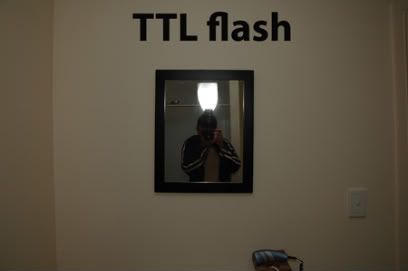
As you can see I have found that TT/BL + 1/3 gives me a much more consistent exposure than plain TTL flash . When there is a lot of white in the frame TTL/BL +1.3 has a certain 'consistency' as you can see in the link at the top right in my "TTL/BL consistency theory "
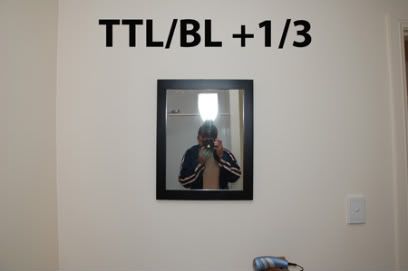
It would appear from my tests that TTL flash [ and TTL metering ] looks more at the shadows and darker areas and tries to light them sometimes resulting in blown highlights while TTL/BL uses the focus points and tries to control highlights often resulting in slight underexposure which in fact results in more 'keepers' because it is easier to tweak the levels up than recover blown highlights ! [ As mentioned simply using TTL/BL+1/3 gives a better average than plain TTL ]
I'll be doing more tests with wireless flash but so far it is evident from my results that when using wireless flash and "TTL" mode the flash is in fact resorting to TTL/BL metering using the superior focus point info as well . [ compare this to the first two pictures ] .

The focus point theory ? Have a look at these pictures - [my D40 only has three focus points .]
All focus points on the black surface ....
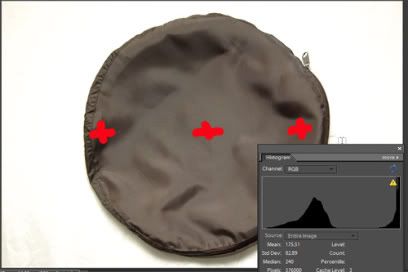
Then I slowly moved until just one focus point was touching the white surface - it's not the in-camera metering ! I have tried this in many situations .
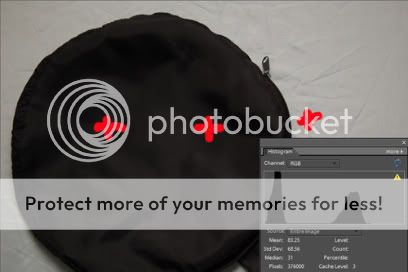
As long as the focus point 'diamond' finds contrast the meter does its best to preserve highlights resulting in slight underexposure when there is white in the scene but it remains consistent so one flash exposure compensation covers you .
Here's an extreme example of what I am talking about - since the white area was small and in shadow it wasn't as if it spot metered that area but it shows how well the system 'manages' differences in contrast .
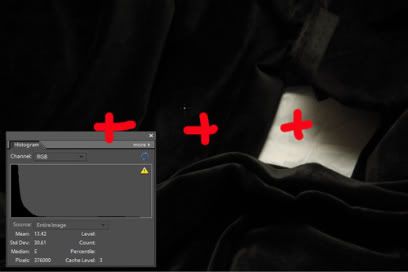
I eventually worked out a test to illustrate the concept of TTL/BL compensating for the ambient . Basically TTL/BL doesn't really know what the ambient is , it relies on the meter reading from the exposure mode you have selected which is important to remember - I'll show you why ...
Since many people shoot in manual mode when using flash I thought I would illustrate the concept by having an off centre subject to exaggerate the issue a bit . First I set the meter to zero in matrix metering and took a picture using TTL/BL and bounce flash . It fired rather weakly because the meter told it the subject was already correctly exposed .
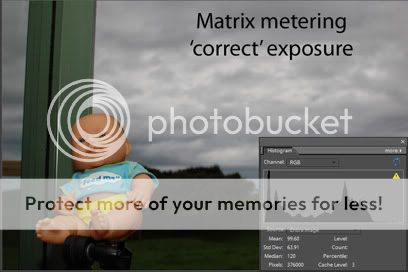
Then I changed to centre weighted metering and the meter said "+1" with regard to exposure but the flash output stayed the same ....[ note : I never changed any settings besides metering mode ]
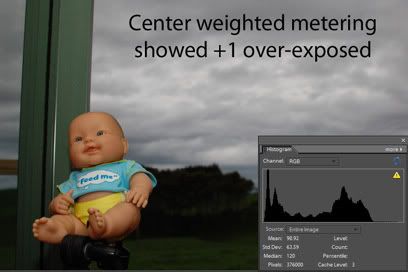
It doesn't seem to care if you want to over-expose the subject with the ambient - it fires the same strength by the look of the results .
Now I increase the shutter speed , still in centre weighted metering mode so that the meter goes back to zero - the background changes but the flash output stays the same ....
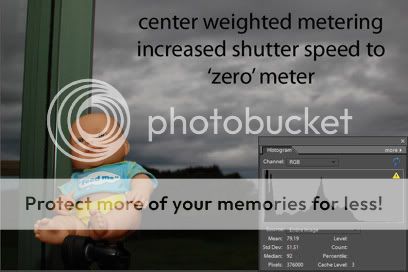
Now see what happens when I simply change the metering mode - all the settings were the same as the previous shot in this picture except for the fact that I changed to matrix metering and suddenly the meter showed "-1" because matrix metering is strongly weighted toward the active focus point - which was on the doll .... TTL/BL responded by firing one[?] stop brighter !
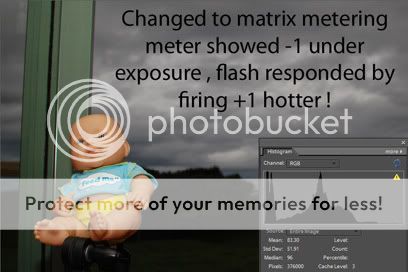
So ...... it would appear from this test that TTL/BL uses the focus points for its pre-flash reading and watches the built in meter to see what your shutter speed setting is doing with the ambient .
That would mean that in a rather round-about way its output is affected by the shutter speed you select but that reading will also be affected by the metering mode you have chosen and its characteristics in different situations . If you are in an auto mode outdoors TTL/BL will always fire weakly - once you are in manual mode , the metering mode you have selected will affect how strongly TTL/BL fires as it watches your meter to determine the ambient exposure .
Once you are indoors , F5.6 iso 200 1/30th sec for example , the ambient will show up as so badly under-exposed that TTL/BL will realize it is the only light source and push out the required amount of flash .
Now on to wireless CLS which is easier to understand once you know how TTL/BL meters - because wireless CLS uses TTL/BL by default !
I set up my model " Stinky " with a black background and had one SB800 to my left on channel 3a and the other on my right on channel 3b
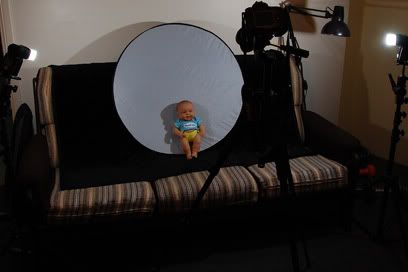
As with TTL/BL bounce flash it doesn't matter where the subject is in the frame as long as it is under the focus point diamond .
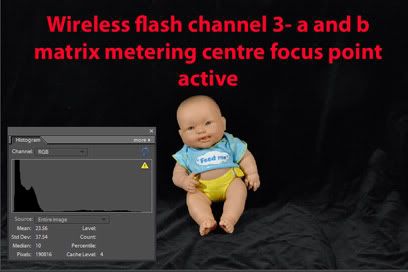
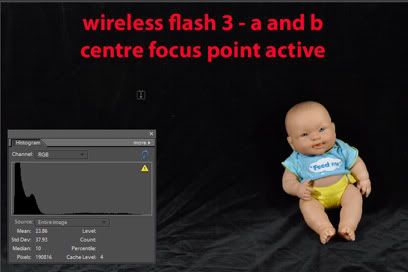
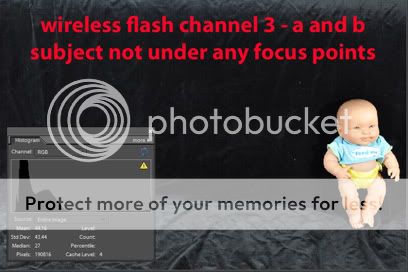
When we introduce a white object on the right channel 3a fires normal while 3b sees the white and "underexposes" that side [You could dial in compensation , depending what you want it to do of course ]
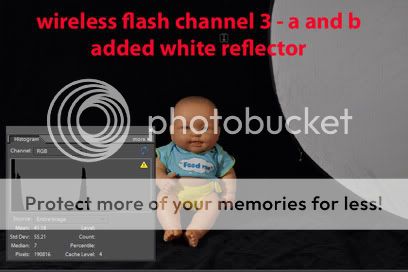
and exactly the opposite if we move the reflector to the other side ...
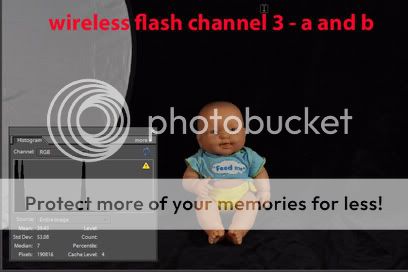
When we look at an image taken with a single on-camera flash bounced off the ceiling it looks ok until we introduce the reflector .
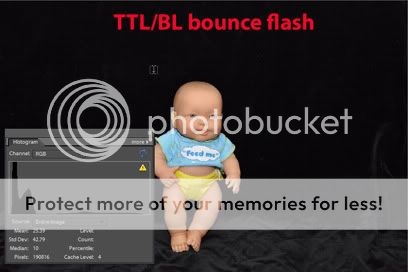
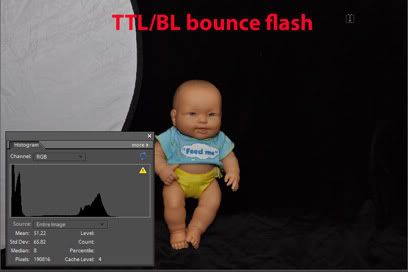
So the pattern we see is underexposure when there is white anywhere in the frame . This is still more consistent than TTL flash which meters only off the matrix pattern . With TTL/BL also using the focus points we have a more consistent exposure as long as at least one focus point is on the white object - easily fixed with exposure compensation .
I have found that TTL/BL + 1.3 [ dialed in to the flash head ] has much more consistency than plain TTL flash . Just remember that when you use wireless flash with Nikon's CLS you are using TTL/BL metering so in the examples above , as soon as there is white in the frame you need to add around +1.3 to the exposure !
When the background is black TTL/BL meters of the subject as the brightest object in the frame .
Tonight I walked around the house with this concept in mind - I have been trying to work out the concept of TTL/BL with bounce flash indoors for a few weeks now , taking lots of pictures and trying to solve the riddle . Well I think that's basically it now : With TTL/BL and bounce flash , as with the SB400 in bounce mode - and when using wireless CLS :- "TTL/BL meters off the focus points and adjusts exposure for the brightest part of a scene under any one of the focus points ." And these were my test pictures based on that theory :
I looked at this kettle and decided " That's white enough to be a +1.3'' [ To be able to keep the camera to my eye I dialed it in with the Ev [+-] compensation button ] .
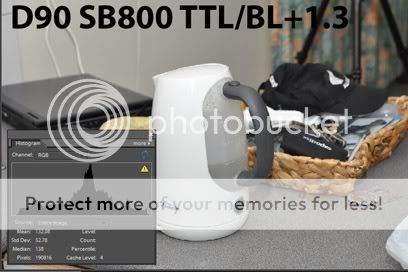
I looked at "Stinky" and decided his face was a +0.3 - and made sure a focus point wasn't on that white bit on his shirt .
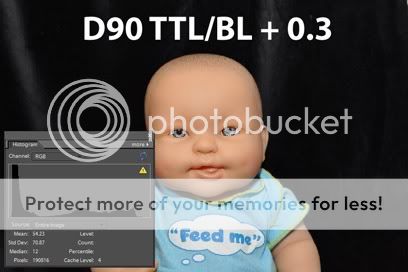
I decided the phone was a little dull to be called 'white' so went for +1 only .
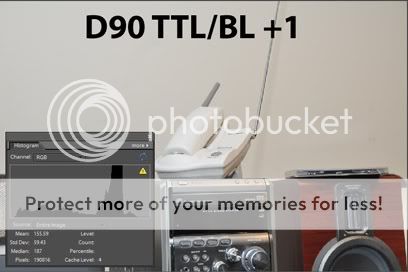
This bulb looked a little grey so I went for +1 , but by the look of it I could have made it a +1.3 considering all the light objects in the frame .
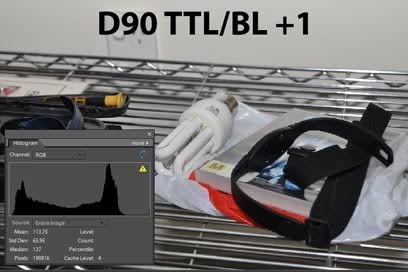
Regardless of the rest of the scene I knew my shiny new manual warranted a "+1.3" ...
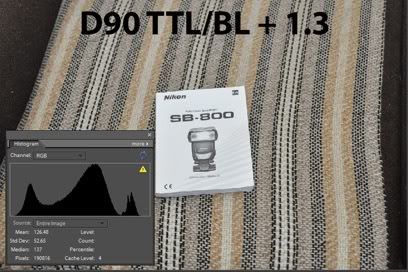
and just about anything that has some white in the frame seems to do well with +1.3 ....
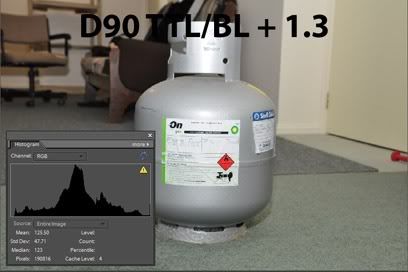
Once again , I'm not saying TTL/BL is perfect - I wouldn't need to dial in compensation if it was - but I am saying I have discovered the 'predictable' aspect of TTL/BL bounce flash - that it meters off the lightest part of the picture - as long as it is under a focus point .....
I worked hard to make sure there were no focus points on the white manual and my 'default' setting for 'average grey' scenes of +0.3 did the trick without blowing any highlights while +1.3 totally blew the highlights in this shot .
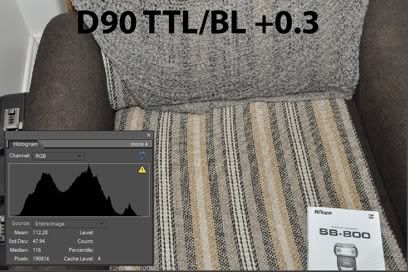
So maybe that is the problem solved for now with regard to TTL/BL and underexposure - time will tell . Just remember that when you use forward flash with the SB400 , SB800/600 or built in speedlight indoors you don't need this compensation because the flash is using the distance info from the lens .
26/10/2009 I did some more tests to see exactly how much difference there is in the amount that TTL/BL meters compared to TTL .
I borrowed a flash meter and took slow exposures and used rear curtain flash mode so I could meter the main flash without interference from the pre-flash .
The first image was in a situation where I know TTL and TTL/BL give the same results - a neutral tone centralized in the frame - they both gave the same result according to the flash meter .
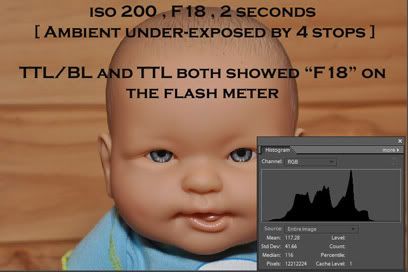
Then I increased the time the shutter was open to expose the ambient correctly - TTL/BL responded by decreasing its power by 1.7 stops .
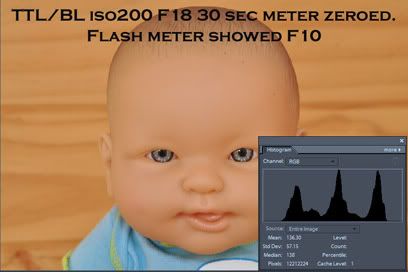
This test proves that TTL/BL does in fact adjust according to where the meter is which is affected by the shutter speed and how much of the ambient you capture . When the ambient is badly under-exposed TTL/BL takes over and provides as much lighting as it deems necessary . As you drag the shutter and let in more ambient TTL/BL responds by backing off its output all the way to -1.7 when the ambient is correctly exposed - which is a commonly accepted setting for for fill-flash in TTL mode . Of course since TTL and TTL/BL meter differently the results will not be exactly the same in varying situations .
In my recent blog on tests with the diffuser dome a comment was added by Russ McDonald who helped design the original system in the 80's which I find very interesting .
" In TTL-BL mode, When the preflash return is strong much more emphasis is placed on the preflash and much less is placed on the distance.
In TTL-BL mode, when the preflash return is weak, much more emphasis is placed on the distance.
This may be part of the differences you are seeing between using the diffuser and not using the diffuser. The diffuser can cause a big difference in the preflash return energy. "
A while ago he mentioned how the original program was designed to use distance info in case the pre-flash reading was messed up by the bright background for which TTL/BL was originally designed [ before they changed it ] .
So it appears that in an obscure way the diffuser dome gives greater accuracy because the weaker pre-flash reading encourages the program to use the distance info more in its calculations taking advantage of the direct light coming from the dome .
An interesting read :)
I've added a 'donate button' while I wait for adsense to be approved so perhaps I can spend more time doing further research .
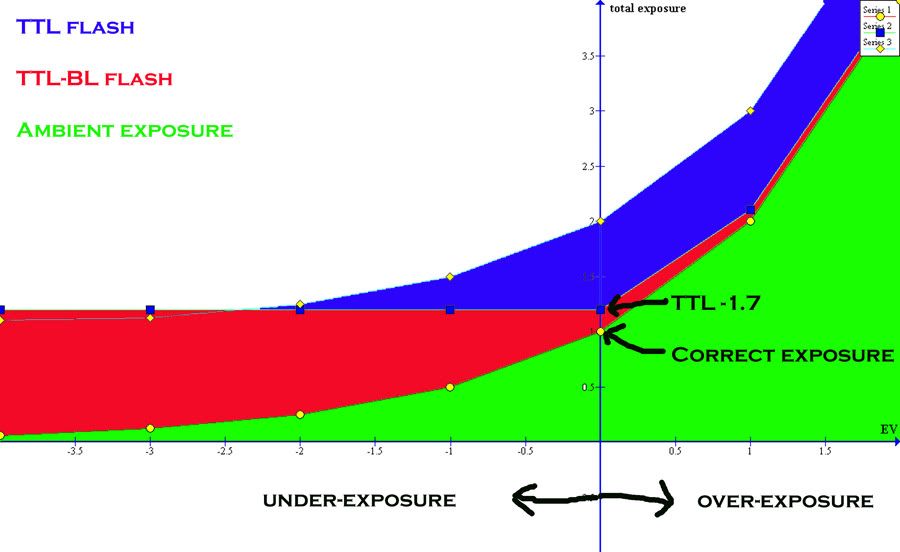



18 comments:
A very comprehensive report Mr. Downs, do you have a PDF version in the pipeline when your final conclusions are complete? Will the results change with a Darker Tone Baby? :-) And will your technique have any use with other Flash systems? Cheerz!!
Hi Pete , do I need a PDF version ?
Terrific information presented here Desmond. Question for you...
Suppose you're outside in very bright sunshine and your subject doesn't fill the frame. Assume for the moment that the scene is really bright and no shade to go hide under but you want a touch of fill to lift the subject. The camera meter is likely going to darken the scene to bring it down to 18% or 12% (depends who you read) grey. however, you want the bg to be exposed correctly so you dial in a touch of + compensation.
My understanding of the Nikon SB system is that the + comp in the camera also affect the flash byu the same token so does one simply dial in negative comp even in TTL/BL or has this hypothetical situation brought the system to the limit of its ability?
Hi , I only just saw your comment - been very busy doing more tests :) .
From my experience , as you say , Nikon flash exposure is cumulative . Dialing in +1 EV compensation would add that to the flash power output . Though I haven't actually fully tested this while using TTl/BL it should be consistent with normal flash .
I think many people would tell you to set the exposure manually for the background - I fiddled with compensation enough to know that's good advice .
Another person on Nikoncafe where I have been doing my tests played around with cumulative compensation and stated that when he turned the flash head sideways the EV compensation suddenly fell away ??? That's not something Nikon tell us which is why I prefer to make flash compensation on the flash head itself and expose manually for the background now .
Question - how do I meter when taking a shot under a large willow tree with the sky showing through. I want a good exposure for my subject and I'd like the sky to remain blue and not blown out?
Hi Sue , you have to set your exposure manually for the sky . Maybe use spot metering off the sky , set your exposure there and leave it . Turn on the flash and take a test shot and then adjust the flash compensation according to what you want the subject to look like . Just remember that TTL/BL doesn't work with spot metering and you will have to change back to another mode after setting exposure for the sky .
Because the meter will show the scene as under-exposed the flash will probably fire brighter than you want and then you dial in negative compensation on the flash .
Hi Desmond,
Since you're into analyzing stuff I thought this might be of some interest to you as well:
http://dptnt.com/2009/11/nikon-cls-advanced-wireless-lighting-part-i/
Thanks for the link - very interesting !
I am so glad that I stumbled across your blog, after finding that my results weren't matching the description provided in the other site that you referred to.
While I don't understand all the technical aspects, I trust my eyes enough to know that the way you are describing things matches my results.
There is just no reasoning with some people, particularly if they have a lot invested in an alternative point of view.
Thanks for the input Craig - yep , some people are too stuck in their ways to accept that we are in a constantly evolving world - faster than ever before . The author of the other TTL-BL site argued with everything I said and I proved him wrong via a series of emails with test results - but he still won't change his blog :)
The real shame is the number of people that are being misled. I was actually starting to think that there was something wrong with my camera when I wasn't getting the same results as the other site described. I was getting so frustrated, I was actually thinking about selling my camera.
It is a shame that more people don't know about your research, as what you have done is amazing. Please keep up the great work.
Perhaps you should contact the author of that other site and ask him why he won't accept the fact that things have changed since he helped design the system in the 80's - but be careful , he gets angry when told that :D
The genuine disgrace is the quantity of individuals that are being misdirected. I was really beginning to believe that there was a major issue with my camera when I wasn't getting similar outcomes as the other site portrayed. I was getting so baffled, I was really considering selling my camera.
It is a disgrace that more individuals don't think about your exploration, as what you have done is astounding. If it's not too much trouble keep up the extraordinary work.
We sell high quality natural pampas grass form low, medium sizes to extra large.
Some come in singles and others come in packages of 2, 3 or more stems.
Our pampas are fluffy. These dry pampas grasses have different colors but we stock mainly white,
off white and sometimes colored pampas grass depending on the need.
big dried pampas grass
Olives differ in size and appearance, as well as the oil content and the amount of flesh depending on the variety.토토사이트
Therefore, olives should be pickled in water, brine, or alkaline solution, and this process is called curing or pickling. The traditional curing method uses natural microorganisms on the surface of olives to help fermentation.토토사이트
That's a really good piece of data. Amazing 먹튀 but I believe it will help a lot in my country
We are linking to this great post on our website This blog is a very informative place. I'll come by often 토토사이트
Post a Comment